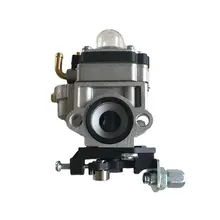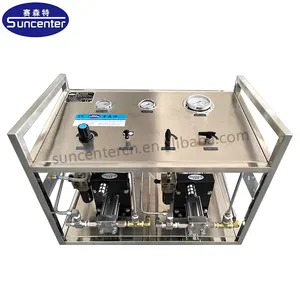Coolant Pump Overview
A coolant pump, an essential component in various industrial and mechanical processes, plays a pivotal role in maintaining the circulation of coolant, often a water-based liquid or antifreeze solution, through machinery to prevent overheating. These pumps are integral to systems where temperature regulation is critical for operational efficiency and equipment longevity.
Types and Applications
The applications of coolant pumps are diverse, ranging from machine tool coolant pumps used in CNC machines to coolant pumps for bandsaws, ensuring precise temperature control during cutting operations. In the automotive sector, electric coolant pumps manage the engine's temperature to enhance performance and fuel efficiency. Specialized variants like high pressure coolant pumps are designed to handle demanding industrial environments where superior pressure is required for effective coolant circulation.
Features and Efficiency
Efficiency is a hallmark of modern coolant pumps, which are engineered to move fluids with minimal energy expenditure. The design considerations of these pumps focus on creating a compact footprint without compromising on the lifting capability, even from significant depths. For instance, 3 phase coolant pumps offer robust performance in industrial settings, while 12v coolant pumps are suitable for mobile or smaller applications.
Materials and Durability
Durability is paramount in the construction of coolant pumps. Materials such as corrosion-resistant metals and robust composites ensure that these pumps can withstand the rigors of continuous operation and exposure to various coolants, including harsh chemicals. This resilience is crucial in applications like coolant transfer pumps, which may handle a range of fluids beyond simple water-based coolants.
Selection Considerations
When selecting a coolant pump, factors such as flow rate, pump type, and the specific requirements of the application are critical. For example, a lathe coolant pump may be optimized for lower flow rates suitable for metalworking lathes, whereas a CNC coolant pump might prioritize a higher flow to accommodate the cooling needs of high-speed CNC machining centers.
Environmental and Cost Factors
The environmental impact and operational cost are increasingly important considerations. Pumps like the coolant electric pump are designed to be energy-efficient, reducing both electricity consumption and the associated carbon footprint. While the initial investment in a coolant circulation pump is a consideration, the focus on energy efficiency can result in long-term cost savings.










































 浙公网安备 33010002000092号
浙公网安备 33010002000092号 浙B2-20120091-4
浙B2-20120091-4